Compare prices between different insurer providers and use the promo code 'PAULTAN10' when you make your payment to save the most on your car insurance renewal compared to other competing services.


Latest Featured Stories
MINI Countryman review - RM254k
Latest Certified Pre-Owned with 1 Year Warranty
10% discount when you renew your car insurance with us
Compare prices between different insurer providers and use the promo code 'PAULTAN10' when you make your payment to save the most on your car insurance renewal compared to other competing services.


Search oto.my Car Classifieds
Latest Stories
In Cars, Leapmotor, Local News / By Mick Chan / / 0 comment
As Leapmotor made its first Malaysian appearance with the local showing of the C10 electric SUV this month, the Stellantis brand has also shown the T03 compact electric vehicle in the country.
While the ‘affordable EV’ billing of Leapmotor within the wider Stellantis group of brands as depicted in Stellantis Malaysia’s plan for this market suggested that the T03 would be the model to lead the brand’s entry, the company has since revealed that it will be the C10 SUV instead that will lead the brand’s product introduction in Malaysia in the fourth quarter of this year.
This is because target buyers for EVs tend to be more affluent and thus the brand’s introduction with a more upmarket model made more sense, said Stellantis Malaysia managing director Jamie Morais. That said, the local presence of the T03 gives us a better look at what the compact model has to offer.
In terms of exterior dimensions, the T03 measures 3,620 mm long, 1,652 mm wide and 1,605 mm tall with a wheelbase of 2,400 mm. For comparison, the C10 SUV that has been earmarked for introduction to Malaysia is in the D-segment SUV category, measuring 4,739 mm long, 1,900 mm wide and 1,680 mm tall with a wheelbase of 2,825 mm, making it comparable on these counts to the Proton X90.
Powertrain for the Leapmotor T03 is a single front-mounted electric motor rated to produce 95 PS, with a claimed maximum battery range of 280 km based on the WLTP testing standard. Three driving modes are offered – Standard, Sport, and Eco – while there are also three modes for the steering, which are Comfort, Standard and Sport.
Features in the T03 include an electric parking brake with auto hold, panoramic sunroof, an electric sunshade, as well as remote operation for battery pre-heating, air-conditioning, self-parking and vehicle location. As with the C10 that was shown locally, the T03 compact EV is a left-hand-drive example.
What do you think, readers – if the Leapmotor T03 is to be introduced to the Malaysian market, how much should it be priced?
In Local News / By Gerard Lye / / 0 comment
Gentari, through its Gentari Green Mobility subsidiary, has entered into a collaboration with Lazada to pilot the electrification of the e-commerce platform’s logistics operations which will see 25 electric motorcycles be used for last-mile deliveries.
This is part of Gentari’s efforts to further promote green mobility adoption via a hassle-free, long-term electric vehicle (EV) leasing solution tailored for commercial fleet operators as part of the company’s Vehicle-as-a-Service (VaaS) offerings.
“Malaysia has one of the highest rates of vehicle ownership among East Asian countries, which significantly contribute to carbon emissions in the country. To help lower emissions from the transportation sector, Gentari is now introducing electric two-wheelers as part of our Vehicle-as-a-Service offering, targeted towards facilitating businesses to transition to EVs. We are excited to collaborate with Lazada in decarbonising their logistics fleet operations,” said Shah Yang Razalli, deputy CEO of Gentari and CEO of Gentari Green Mobility.
“Today, our focus on making commercial fleets more sustainable helps drive the transition across various societal and economic levels, especially within the vital last-mile delivery sector. Additionally, our strategy aligns with national goals such as the National Energy Transition Roadmap’s targets and Bursa Malaysia’s ESG reporting mandate that is spurring corporations to adopt green mobility,” he added.
Gentari has been involved in the VaaS business since 2022 and has delivered more than 3,400 vehicles to businesses across Malaysia, India and Indonesia looking to decarbonise their fleet operations with fully electric cars, bikes and vans. The company also claims to be the largest operator of fast chargers in Malaysia, with 120 DC fast chargers operational in a pool of over 400 EV charging points.
“We are excited to embark on this partnership with Gentari, which underscores our dedication to ESG principles and accelerates our journey towards a greener future. This collaboration sets a new environmental standard in logistics, not only by boosting our operational efficiency but also reducing our carbon footprint. It reflects our commitment to support Malaysia’s journey towards environmental sustainability and we hope to work together with Gentari to make this positive difference, one delivery at a time,” commented Venkat Shankar, chief logistics officer of Lazada Malaysia.
Meanwhile, minister of international trade and industry Tengku Datuk Seri Zafrul Abdul Aziz, who was present to officiate the collaboration, said, “we are greatly encouraged to see companies actively contributing to the achievement of sustainability targets under policies such as the Low Carbon Mobility Blueprint and New Industrial Master Plan 2030.”
This Gentari-Lazada collaboration is also a great showcase of industries’ convergence to promote electric and green mobility while facilitating the nation’s transition to sustainable transportation. The fleet leasing model, which also complements MITI’s Electric Motorcycle Use Promotion Scheme (MARiiCas) effectively democratises EVs, promoting an inclusive, sustainable model of vehicle ownership benefitting more users,” he added.
Registration for MARiiCas started last December and offers a RM2,400 rebate for the purchase of an electric motorcycle for Malaysian citizens with an annual income below RM120,000 – 3,000 applications have been approved so far. Gentari said in its release that its efforts to promote electrification of commercial fleets is aligned with government targets aimed at achieving net zero carbon emissions by 2050. This includes those outlined in the National Energy Transition Roadmap targeting 80% of two-wheelers to be electrified by 2050.
In Local News, Public Transport / By Anthony Lim / / 0 comment
Keretapi Tanah Melayu (KTM) has announced a new schedule for its electric train service (ETS), starting from August 1. It is set to introduce six ETS Ekspres services from the 32 existing services for the KL Sentral-Ipoh-KL Sentral, KL Sentral-Butterworth-KL Sentral and KL Sentral-Padang Besar-KL Sentral sectors.
The updated schedule will see the KL Sentral-Ipoh-KL Sentral and KL Sentral-Butterworth-KL Sentral routes having 10 trips per day and the KL Sentral-Padang Besar-KL Sentral route, eight trips per day. Meanwhile, the the Gemas-Butterworth-Gemas and Gemas-Padang Besar-Gemas routes will feature two trips per day.
Aimed at saving travel time, the express trains will only stop at major stations and take two hours for the KL Sentral-Ipoh sector, three hours and 30 minutes for the KL Sentral-Butterworth sector and four hours and 50 minutes for the KL Sentral-Padang Besar sector.
In a statement, the rail operator said that the new schedule takes into account the completion of the Klang Valley double track (KDVT) Phase 1 upgrade project on the Rawang-KL Sentral sector.
The company added that tickets for ETS and KTM Intercity for August to November 2024 are now available for purchase, and encouraged commuters to buy their tickets online via the KTM Mobile application (KITS) or the KTMB website at www.ktmb.com.my.
In Local News, Malaysian Fuel Prices / By Mick Chan / / 1 comment
It’s Wednesday, which means it is now time for the weekly fuel price update by the finance ministry, which has announced the retail prices of fuels for the coming week of May 30 to June 5, 2024.
The status quo for retail fuel pricing continues, as it has since September 2023, which has RON 97 petrol remaining at the rate of RM3.47 per litre where it also was last week. RON 95 petrol continues at its present ceiling price of RM2.05 per litre, as set by the Malaysian government in February 2021.
Similarly, the retail price of Euro 5 B10 and B20 diesel stays unchanged at RM2.15 per litre, likewise the Euro 5 B7 grade of diesel remains, at 20 sen per litre more, at RM2.35 per litre. Changes are on the horizon with the rolling out of the targeted diesel subsidy programme, and the pump price for Euro 5 diesel at unsubsidised stations is RM3.33 per litre as of today, May 29.
These prices will take effect from midnight tonight until Wednesday, June 5, 2024, when the next set of fuel price updates will be announced. This is the 22nd edition of the weekly fuel pricing format for this year, and the 281st in total since the format’s introduction at the start of 2019.
In BMW, Cars, Concept Cars, International News / By Mick Chan / / 1 comment
The latest concept car from BMW is the BMW Concept Skytop, which has been unveiled at the Concorso d’Eleganza Villa d’Este that takes place alongside Lake Como in Italy.
Melding the latest styling elements with design cues from past roadsters in the German marque’s history such as the Z8 and the 503, the front end of the Concept Skytop reprises the classic forward-leaning shark-nose front fascia, combining this with modern cues such as the illuminated kidney grille.
Among the visual features of the Concept Skytop are the full-length spline that runs from the bonnet through the car’s interior, connecting to an aluminium trim piece on the tailgate to “emphasise the dynamic flow” of the car’s silhouette, says BMW.
Inside, the occupant cabin of the Concept Skytop features a leather-trimmed rollover bar that combines with side fins on the car’s B-pillars, while the cabin itself draws upon the interior of the production 8 Series.
Beyond the styling aspects, there are more parallels drawn with the Z8 from which the Concept Skytop draws inspiration, namely, also in terms of powertrain.
Where the Z8 used the 4.9 litre naturally aspirated V8 as found in the super-sedan of its contemporary, the E39-generation M5, the Concept Skytop packs “the most powerful V8 engine in the BMW drivetrain portfolio,” according to the brand, making no mention of electric-assisted drive.
This would be the S63 4.4 litre biturbo petrol V8 engine that outputs 625 PS and 750 Nm in the M8 Competition, or slightly more at 635 PS in the M5 CS.
While this is a concept in name and styling, the Concept Skytop could pave the way for a production car. “The headlamps, the tail-lights, they’re new. They’re as slim as we could possibly make them, but we know they could be homologated. If we do it, I think we should do it in a very limited production… Like we did with the 3.0 CSL,” BMW design director Adrian van Hooydonk told Autocar.
“We could deliver [a production car] within a year if we were to go that way,” van Hooydonk said. “It is a little bit like a test balloon. You show the cars, and if there’s enough demand, it can be built. I think the demand is quite high. So probability is quite high. We’ll see over the next few weeks if that interest translates into purchasing orders,” BMW M CEO Frank van Meel told the magazine.
In Bikes, Kawasaki, Local Bike News, Modenas / By Mohan K Ramanujam / / 2 comments
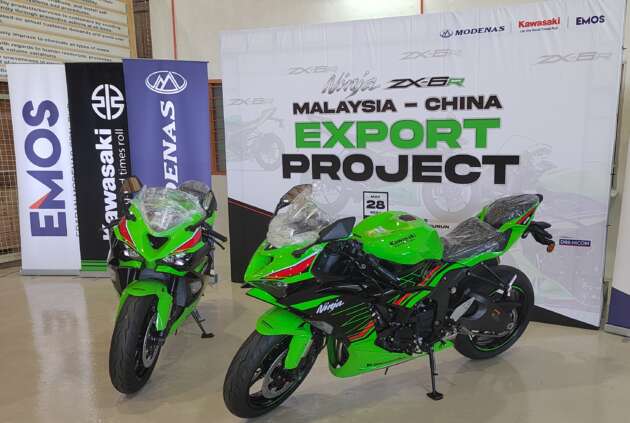
National motorcycle maker Modenas has begun export of locally assembled Kawasaki ZX-6R sports bikes to China. During a visit to its facility in Gurun, Kedah, Malaysian media were shown the ZX-6R assembly line and the sending off of a container.
China is the latest in export destinations for Modenas since operations begin in 1997, Greece being the first overseas market. Since then Modenas has exported motorcycles to 10 international markets with 91,057 two-wheelers of various capacities and types delivered.
Planning for the export of the ZX-6R to China began in 2021, with Modenas overcoming two major hurdles; first, permission from joint-venture partner Kawasaki Heavy Industry (KHI); and two, approval from the China Quality Certification Centre, which included a factory audit.
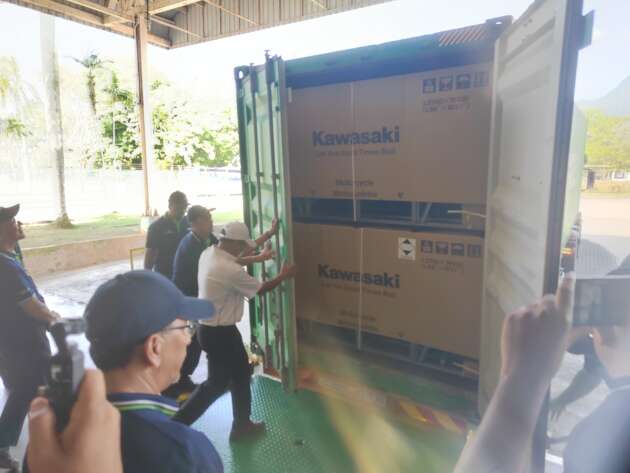
Production began in January 2024, with Kastam DiRaja Malaysia (Royal Malaysian Customs) approving export in February. The first shipment of 28 ZX-6Rs arrived at Kawasaki Motors Shanghai in March 2024, followed by a second shipment of 140 units in May.
With this third shipment of 112 units, total export of the ZX-6R assembled by Modenas to China has reached a total of 280 units. There are currently three production lines in the Modenas factory, with one line dedicated to the production of the ZX-6R.
In Cars, International News, Mazda, Subaru, Toyota / By Danny Tan / / 18 comments
All in on EVs, ICE is dead. Legacy carmakers who believed in that and went all in on electric might not be so confident now, and some have even made U-turns, as demand for EVs aren’t catching up with the supply. Meanwhile, someone must be looking pretty smug in his corner, probably muttering ‘I told you so’ in Japanese.
Toyota is once again striking the same tone, but is now joined with Subaru and Mazda. The three carmakers have each committed to developing new internal combustion engines tailored to electrification and the pursuit of carbon neutrality.
“With these engines, each company will aim to optimise integration with motors, batteries and other electric drive units. While transforming vehicle packaging with more compact engines, these efforts will also decarbonise ICEs by making them compatible with various carbon-neutral (CN) fuels,” the companies said. The opposite of fossil fuel, CN fuels include e-fuel (synthetic fuel), biofuels and liquid hydrogen.
“Subaru, Toyota, and Mazda have always been driven by a deep understanding of their customers’ diverse lifestyles. This understanding has led the three companies to develop signature engines that not only represent their respective brands but also cater to their customers’ unique needs and preferences,” they added. Car guys, continue reading, because there’s good news for you.
The press release mentioned ‘carbon as the enemy’ and ‘efforts to ensure a future for the supply chains and jobs that underpin engines’. These points have been stressed before by former Toyota president/CEO, Japan Automobile Manufacturers Association (JAMA) ex-chairman and lifelong petrolhead Akio Toyoda, which you can read in full here.
Also mentioned are the broadening of powertrain and fuel options such as liquid hydrogen and CN fuels, tested under the extreme conditions of racing. Have you heard of a hydrogen combustion engine? We’re not talking about fuel cell EVs, but ICE adapted to use hydrogen as fuel – check out this Toyota GR Yaris that doesn’t use petrol, driven by Rowan Atkinson a.k.a. Mr Bean.
“With the next generation of engines, the three companies will seek to not only improve standalone engine performance but also optimise their integration with electric drive units, harnessing the advantages of each,” the release said, hinting at hybrids without mentioning the H word. Toyota, maker of the Prius, is of course the king of hybrids.
The next point will get car enthusiasts nodding. The companies say that the new engines will ‘revolutionise vehicle packaging’ by being more compact than existing units. Smaller engines will allow for lower hoods, improving design possibilities and aerodynamic performance while contributing to better fuel efficiency. Sounds perfect for a sports car, doesn’t it? Of course, compliance with increasingly strict emissions regulations is also a target.
What brings out the best in us? Competition. “In order to provide our customers with diverse options to achieve carbon neutrality, it is necessary to take on the challenge of evolving engines that are in tune with the energy environment of the future. The three companies, which share the same aspirations, will refine engine technologies through friendly competition,” said Koji Sato, current president and CEO of Toyota.
Remember the ‘signature engines’ part mentioned earlier? Boxer engines are a Subaru trademark, and will be so for the foreseeable future.
“Achieving a carbon-neutral society is a challenge that must be undertaken by all of Japan’s industries and society as a whole. As we continue to refine electrification technology, we will also enhance our horizontally-opposed engines with an aim to use carbon-neutral fuels in the future. Moving forward, the three companies sharing the same aspiration will continue to advance the pursuit of sustainable excellence in Japanese car manufacturing,” said Atsushi Osaki, Subaru’s president and CEO.
Mazda? Rotary, of course! “We will continue to offer customers exciting cars by honing internal combustion engines for the electrification era and expanding the multi-pathway possibilities for achieving carbon neutrality. Given the rotary engine’s compatibility with electrification and carbon-neutral fuels, Mazda will continue to develop the technology through co-creation and competition to ensure it can contribute broadly to society,” said Masahiro Moro, president and CEO of Mazda.
So, we can expect ICE to live on – but working in conjunction with motors and batteries, as well as clean fuels – for the next decade at the very least. I see this Japanese ‘multi-pathway alliance’ to carbon neutrality (will more carmakers join the pact?) as a counter to the ‘all eggs in the EV basket’ approach to R&D taken by Western automakers post-Dieselgate.
Ironically, that approach – and public declarations of EV-only deadlines by bureaucrats – has handed the initiative and momentum to China, an EV threat that they completely didn’t see coming. As Chinese EVs gush into European ports, they definitely see it now and are trying to react via tariffs and legal means. Instead of knee-jerk protectionism, how about eating some humble pie and join the alternative movement?
That’s unlikely, of course, and it’s also undeniable that the Japanese have their own interests to protect, but if there are other routes to carbon neutrality, why are we all so fixed on EVs? What’s your view on this?
In Cars, International News, Porsche / By Gerard Lye / / 0 comment
The Porsche 911 is now available with a hybrid powertrain for the first time as part of a facelift for the 992-generation model. The new T-Hybrid system will be offered with Carrera GTS versions of the 992.2 model, which are joined by the updated base Carrera variants, while the Turbo, Turbo S and GT3 RS options continue on untouched.
A hybrid system for the 911 is a big deal, and Porsche pulled out all the stops to make sure it delivers on performance. First up, the Carrera GTS gets a new 3.6 litre turbocharged flat-six petrol engine, which is an upgrade from the 3.0 litre unit used previously. The increased displacement comes courtesy of a bore and stroke increase to 97 mm and 81 mm respectively. The new engine also features VarioCam camshaft adjustment and a valve control using roller rocker arms.
However, where the previous engine had a twin-turbo setup, the new one only has a single turbocharger in play, albeit a pretty advanced one. Sandwiched between the compressor and turbine wheels is an electric motor that serves to improve throttle response and performance by developing boost as and when required.
Porsche says the switch to a single, electrically-driven turbo means it doesn’t need to equip the GTS with a wastegate. Additionally, the electric motor in the turbo doubles as a generator and can develop up to 11 kW using the exhaust gas stream, kind of like the MGU-H system in a Formula 1 car.
Meanwhile, a second electric motor rated at 54 PS (54 hp or 40 kW) and 150 Nm of torque is integrated into a more powerful PDK eight-speed dual-clutch transmission. Both electric motors are powered by a 400V, 1.9-kWh (gross energy capacity) battery located under the front bonnet where the previous 12V battery used to reside. The 12V battery has now been replaced by a lightweight lithium-ion unit located behind the parcel shelf in the rear.
Thanks to the high-voltage system, the compressor for the air conditioning system can be powered electrically, so there’s no need for a belt drive which makes the engine more compact while making room above the engine for a pulse inverter and DC-DC converter. All these electrified components add just 50 kg to the overall weight compared to the previous GTS.
For the 50 kg gain, the new GTS is a lot more powerful than its predecessor. On its own without electrical assistance, the boxer engine pushes out 485 PS (479 hp or 357 kW) and 570 Nm. Add in the electric motors and the total system output is 541 PS (534 hp or 398 kW) and 610 Nm, which is 61 PS (60 hp or 45 kW) and 40 Nm more than the old GTS.
The 992.2 GTS needs just three seconds to complete the 0-100 km/h sprint on its way to a top speed of 312 km/h, the former being 0.3 seconds quicker than the 992.1 GTS. Improvements have also been made to the standard Carrera Coupe, which can now get from 0-100 km/h in 4.1 seconds (3.9 seconds with the Sport Chrono package) and maxes out at 294 km/h – the previous model is slower by 0.1 seconds and 1 km/h respectively.
The Carrera’s improved performance comes courtesy of a revamped 3.0 litre twin-turbo flat-six engine, which adopts the intercooler from the Turbo models – this now sits directly under the rear lid grille above the engine. The previous GTS lends its turbos to the Carrera too, with the end result being 394 PS (389 hp or 290 kW) and 450 Nm.
On the chassis side of things, the new GTS comes with rear-axle steering as standard for the first time and the Porsche Dynamic Chassis Control (PDCC) anti-roll stabilisation system has been integrated into the high-voltage system for increased flexibility and precision. The sports suspension with a variable damper system (PASM) and a ride height lowered by 10 mm are also standard for the GTS.
As for styling changes, the GTS is identified by its revised front end that has five vertically arranged active cooling air flaps, which are complemented by adaptive front diffusers in the underbody. These open and close depending on how much air flow is required.
Range-wide revisions for the 911 include new matrix LED headlamps that integrate all light functions and still retain the signature four-point graphic. As an option, a HD matrix LED system can be added with more than 32,000 light points that can illuminate the road ahead up to a distance of more than 600 metres.
There’s also a redesigned light strip at the back with an integrated arc and ‘PORSCHE’ logo to give the rear end a deeper and wider appearance, while the redesigned rear grille with five fins per side connects to the rear window to form a graphic unit that fades into the retractable spoiler below.
More minor adjustments include a number plate recessed positioned slightly higher at the rear, while the front sensors for the assistance systems are now located behind a high-gloss surface below the front number plate. Buyers can option a sports exhaust system and aero kit for the Carrera, with the former being standard for the GTS.
On the inside, the 911 is now a two-seater by default, although buyers can option 2+2 seating at no extra charge. Purists might lament the lack of a turn key to side of the steering wheel, which has now been replaced with a regular start button for the first time in a 911.
Another thing that fans will miss is the analogue rev counter because the new 911 now comes with a fully digital instrument cluster represented by a 12.6-inch curved display. This comes with seven views, including a Classic display inspired by the traditional five-tube Porsche dial design with a central tachometer.
The Porsche Communication Management (PCM) system and its 10.9-inch central touchscreen are carried over but with increased customizability than before. The system also has deeper integration of Apple CarPlay and there is even video streaming support while parked. Another change Porsche mentions is a revised centre console storage compartment with a cooled slot for the wireless charging pad.
In its official release, Porsche says the new 911 Carrera can be ordered now as a coupe or cabriolet with rear-wheel drive. For the 911 Carrera GTS, all-wheel drive and Targa (AWD only) are available, with further variants set to go on sale later. Both model variants come with PDK as standard, so you can say goodbye to the manual transmission option for these.
In International News / By Mick Chan / / 5 comments
Cooperation agreements have been signed between MARA Corporation and CRRC Corporation and the China Electrical Equipment Group (CEEG) to explore business ventures in the areas of renewable energy, maintenance and repair of EV buses, as well as solar energy storage and batteries, Bernama has reported.
The initiative by the group of companies under the Majlia Amanah Rakyat (MARA) was the first step in helping the government change public transportation from being diesel-powered, to EVs, said deputy prime minister Datuk Seri Ahmad Zahid Hamidi.
The deputy prime minister witnessed the signing of the collaboration, which included the memorandum of understanding (MoU), memorandum of agreement (MoA) and letter of intent (LoI) between SKS Coach Builders and CRRC Corporation; MARALiner and SKS Coach Builders; and MARA Corporation and China Electrical Equipment Group.
According to the deputy prime minister, there are currently 60,000 diesel-powered buses in Malaysia, and these need to be changed to EV buses in stages in the next 10 years as stipulated at the previous Cabinet meeting, the report wrote.
“We see that in the long run, this will reduce carbon emissions and be cheaper than using diesel. However, I will discuss it in detail with the transport minister regarding the stipulated period for the conversion of the 60,000 diesel buses to EVs,” Ahmad Zahid said.
MARA Corporation, through MARALiner intends to be a leader in the supply of EV buses, including direct sales and leasing for public and government transport, and is estimated to involve around 800 buses valued at around RM960 million, Bernama reported.
In 2017, the Putra NEDO EV bus became the first rapid-charge electric bus to enter service in Putrajaya, and was part of a technology transfer arrangement via a government-to-government agreement between Malaysia and Japan, following the signing of an MoU in 2015 between Putrajaya Corporation (PPj) and New Energy and Industrial Technology Development Organisation (NEDO) of Japan.
In Cars, Local News, Mercedes-Benz / By Gerard Lye / / 3 comments
Mercedes-Benz Malaysia (MBM) has teased the imminent arrival of the new GLB facelift on its social media pages. The updated SUV first broke cover globally back in March last year, bringing with it mild hybrid tech as well as some styling and kit changes.
One way to tell the facelift from the original is by looking at the daytime running light signature, which is now a light strip located at the top of each headlamp cluster. On the pre-facelift model, the DRLs wrap around the bottom left and upper right of the clusters.
Inside, the Mercedes-Benz User Experience (MBUX) maintains its dual 10.25-inch widescreen setup on higher configurations, but gains new display themes, a more capable Intelligent Voice Assistant and a selection of mini-games.
As for powertrains, all petrol options now come with 48V mild hybrid tech and include the GLB180, GLB200, GLB220 4Matic and GLB250 4Matic. The first two are powered by a 1.3 litre turbocharged inline-four making between 136 and 163 PS (134 hp/100 kW and 161 hp/120 kW).
Meanwhile, the remaining two variants feature a 2.0 litre unit delivering between 190 and 224 PS (188 hp/140 kW and 221 hp/165 kW). Depending on the engine, the transmission is either a seven-speed or eight-speed dual-clutch.
The GLB was first launched here back in September 2020 as a fully-imported (CBU) model offered in three variants, including two seven-seat options (GLB200 and GLB250 4Matic) and a sole five-seater (GLB35 4Matic). We’ll have more details when the facelifted GLB is launched in Malaysia, so stay tuned.
GALLERY: X247 Mercedes-Benz GLB facelift


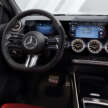
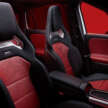
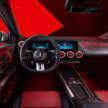

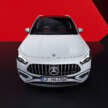
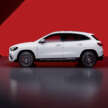

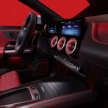


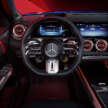
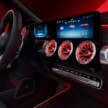
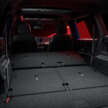
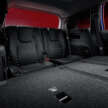
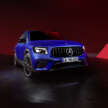
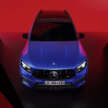
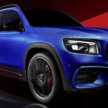
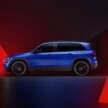
In Bikes, Local Bike News, Yamaha / By Mohan K Ramanujam / / 2 comments
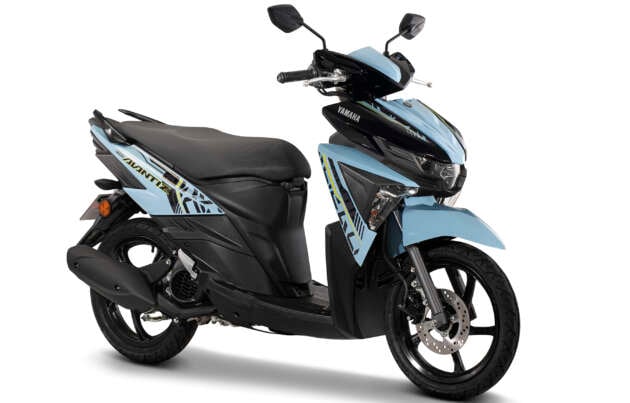
A colour update for the 2024 Yamaha Ego Avantiz scooter in Malaysia, with pricing staying the same as in 2023, at RM5,998. The three new colours offered are Sky Blue, Dark Blue and Purple with stocks available in Hong Leong Yamaha authorised dealers immediately.
Pricing excludes road tax, registration and insurance. Every purchase of an Ego Avantiz comes with a two-year or 20,000 km warranty against manufacturing defects.
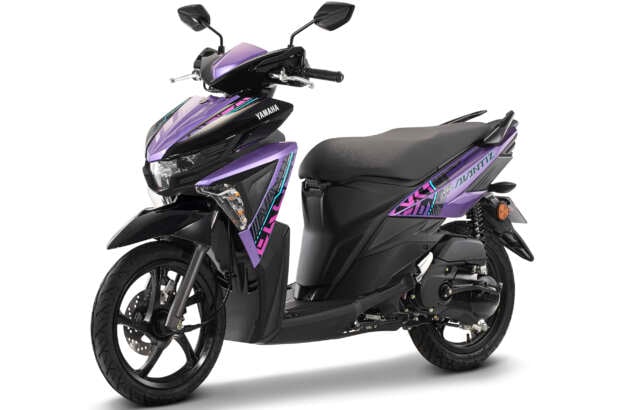
Otherwise there are no changes in mechanical specifications, the Ego Avantiz powered by a BlueCore air-cooled single-cylinder, Euro 4 compliant engine, displacing 125 cc. Fed by EFI, output is claimed to be 9.4 hp at 8,000 rpm with 9.6 Nm of torque at 5,500 rpm.
Drive gets to the rear wheel via a wet multi-plate clutch and automatic gearbox driving a V-belt as is typical of scooters in this class. Weight is listed at 96 kg, with seat height set at 773 mm, and the fuel tank holds 4.2-litres of fuel.
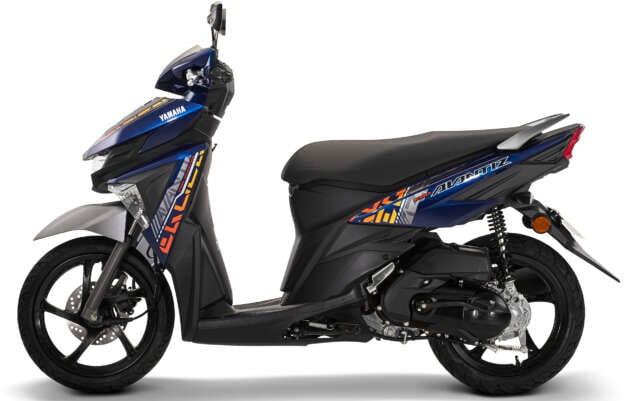
A 14-litre storage compartment is found under the seat, large enough for an open-face helmet while the parking lock system activates a hand brake to prevent unintended acceleration.
A single hydraulic disc-brake handles stopping duties up front, while a drum brake slows the rear wheel. Suspension is with a telescopic fork in front and a monoshock at the back, and the Ego Avantiz rolls on 14-inch wheels, shod with 70/90 and 90/80 tyres, front and rear, respectively.
In BMW, Cars, International News / By Gerard Lye / / 5 comments
It has been two years since the G20/G21 BMW 3 Series got a facelift, and the German carmaker has now saw it fit to give the model an update for the 2024 model year. The bulk of the changes mainly involve the powertrains offered, although there are some minor styling tweaks worth mentioning.
Design-wise, the 3 Series appears pretty much identical to the facelift we saw previously and can still be had with the optional M Sport package or M Sport package Pro. New for 2024 are two solid and seven metallic paint finishes, the latter includes Arctic Race Blue and Fire Red. There are also new wheel designs to choose from, many of which are 19-inch units in a variety of finishes.
As for the interior, it comes with a revised steering wheel and the iDrive system with QuickSelect is now based on BMW Operating System 8.5. The Curved Display from the facelifted model is still present, but is now accompanied by cascade lighting integrated into the trim near the redesigned central air vents as standard.
For cars with the M Sport package, the sport seats now come with M Performtex trim, while alternative upholstery options to the basic fabric are perforated Sensatec and Vernasca leather. Meanwhile, the list of interior trim elements has been expanded to include CraftedClarity glass applications for a more premium look.
In terms of powertrains, plug-in hybrid models get a new high-voltage battery with 19.5 kWh of usable energy (up from 12 kWh). The eDrive Gen5 battery delivers more electric-only range (up to 101 km) and now supports three-phase AC charging at up to 11 kW (previously 3.7 kW), with a full charge taking two hours and 15 minutes. Diesel and M Performance models continue to come with 48V mild hybrid tech, and the full breakdown of the available powertrains is as follows:
BMW 330e Sedan/Touring
BMW 330e xDrive Sedan/Touring
BMW 318i Sedan/Touring
BMW 320i Sedan/Touring
BMW 320i xDrive Sedan
BMW 330i xDrive Sedan/Touring
BMW M340i xDrive Sedan/Touring
BMW 318d Sedan/Touring
BMW 320d Sedan/Touring
BMW 320d xDrive Sedan/Touring
BMW 330d xDrive Sedan/Touring
BMW M340d xDrive Sedan/Touring
BMW has also made small changes to the 3 Series’ chassis, with stiffer mounting connecting the rear dampers to the body for improved refinement. Returning options include M Sport suspension and adaptive M suspension with electronically controller dampers and variable sport steering.
As always, a range of M Performance Parts are available for customers to choose from, covering things from wheels to exterior add-ons, some of which are available in carbon-fibre, matte or high-gloss finishes.
GALLERY: 2024 G20 BMW 3 Series Sedan facelift update
GALLERY: 2024 G21 BMW 3 Series Touring facelift update
GALLERY: 2024 BMW 3 Series facelift update
In Local News / By Mick Chan / / 2 comments
The home ministry (KDN) of Malaysia has announced that the Royal Malaysia Police (PDRM) has collected RM1,318,240 in unpaid summonses in the four-day Sambutan Minggu Perpaduan 2024 national level event that was held at the Angsana Johor Bahru Mall in Johor.
As shown in the image above, the RM1,318,240 sum collected over the four days was split over RM194,750 from the first day (May 23), RM227,690 from the second day (May 24), RM449,590 from the third day (May 25), and RM446,210 from the fourth day (May 26).
The 50% discount on summonses by the PDRM was well received, and made it easy for the public to check for outstanding summonses and pay for them, the home ministry said.
The home ministry thanks the PDRM for the initiative, as well as members of the public for paying off the outstanding summonses, it said.
As with the Madani event held earlier this month, it appears from the tone of KDN that the PDRM policy of offering discounts on summonses will continue, which is at odds with what the transport ministry has stated. The road transport department (JPJ) will not offer saman discounts, transport minister Anthony Loke said in December 2023. While the PDRM are under the home ministry, JPJ is under the transport ministry.
In Cars, Daihatsu, Local News, Perodua, Toyota / By Danny Tan / / 18 comments
Perodua and Toyota vehicles in Malaysia – which were implicated in the Daihatsu ‘procedural irregularities’ safety testing scandal from late last year – have been confirmed as safe. Transport minister Anthony Loke made the announcement today following retesting of the affected models and a comprehensive review and thorough examination of the data.
Loke said that the Perodua and Toyota models, of which 1.7 million units are on the road, have been found to fully adhere to the UN safety standards prescribed under the existing vehicle type approval (VTA) protocols.
“The re-testing sessions for the affected vehicles were fully conducted in March by competent Technical Services (TS) recognised by the World Forum for Harmonisation of Vehicle Regulations (WP29) under the United Nations Type Approval framework,” Loke said, reported by NST.
“Based on the review and further examination by JPJ on each data and the results of the re-testing, it is confirmed that all Perodua and Toyota vehicle models in Malaysia fully comply with the UN safety standards as stipulated under the current VTA procedures,” he added.
The retest covered door latches, door retention components, pedestrian protection, seat anchorage, seat-head restraints, brake system, frontal impact and side impact crash tests. The Perodua models that were involved in the retest are the first and second-generation Axia, second-generation Alza, Aruz, Ativa, Bezza and Myvi. The three Toyota models involved are the Rush, Vios and Veloz.
According to the report dated May 28 released by the JPJ’s automotive engineering division, the retests were done in UTAC, France; Applus IDIADA, Spain; the Horiba-MIRA test centre, UK; and Perodua’s R&D centre in Rawang.
A gamut of tests were conducted (for the full breakdown, browse the report below) and JPJ’s conclusion is that “all models from Perodua and Toyota involved in the retest fully comply with the UN regulations as required by VTA, and there’s no need for a recall”.
Browse the full report and detailed results below. It’s very detailed – for instance, there’s a point-by-point scoring comparison between the Bezza’s original UN-R94 frontal crash test performed by Daihatsu, and the retest results by IDIADA in Spain. Ditto the UN-R95 side impact crash test scoresheet of the Myvi and Alza, where the retest was done in France. Interesting, if you’re into details.
This puts a close to Daihatsu’s scandal that has been hanging like a cloud over itself (president and chairman were replaced in March) and related parties Perodua and Toyota. Crucially, customers and drivers of the models named in the scandal now have assurance that their cars are perfectly safe to drive and comply with all safety regulations.
GALLERY: Retest report on Perodua, Toyota cars following Daihatsu scandal
In Cars, Local News, Peugeot / By Mick Chan / / 12 comments
Peugeot Malaysia has announced that the recently-launched Peugeot 408 has accrued more than 300 bookings since the order books opened this year, with the vast majority opting for the top trim level.
The proportions for bookings split between variants were 60% for the GT, 22% for the Premium and 18% for the base Allure, according to Peugeot Malaysia, which it says is “testament to the market demand and popularity of the car”. Launched last month, the 2024 Peugeot 408 started from RM146,055 for the Allure, ranging up to RM166,055 and RM196,055 for the Premium and GT variants, respectively.
“Today marks the starting point in the Peugeot 408 story as we begin delivering customer orders. The feedback and response have been positive, and we look forward to maintaining and keeping up with the momentum of the 408. We are also pleased to celebrate our first 10 owners and we welcome them and future 408 owners to the Peugeot family,” said Stellantis Malaysia managing director Jamie Francis Morais.
From launch, all three variants of the 2024 Peugeot 408 are powered by the firm’s 1.6 litre PureTech turbocharged inline-four cylinder petrol engine that outputs 218 PS at 5,750 rpm and 300 Nm of torque at 2,000 rpm; outputs which are sent to the front wheels through an eight-speed automatic transmission.
The GT variant is identified externally by its Monolithe black alloy wheel design, automatic matrix LED headlamps and 3D ‘claw effect’ LED tail lamps, along with its front grille finished in body colour.
Interior equipment for the 408 begins with vinyl trim for the base Allure, while the Premium gets leather upholstery, and the GT cabin gets Nappa leather, which also gets driver’s seat memory and massage functions (all three variants get electric adjustment for the driver’s seat).
Further highlights of the GT variant include 3D quartz i-Cockpit instrumentation with configurable i-Toggle controls, 10-speaker Focal audio, and a cabin air cleaning system.
All Peugeot vehicles in Malaysia, including the 2024 Peugeot 408 range are covered by a seven-year/200,000 km warranty.
2024 Peugeot 408 GT in Malaysia
2024 Peugeot 408 Premium in Malaysia
2024 Peugeot 408 Allure in Malaysia
Search
Latest Fuel Prices
| PETROL | |
|---|---|
| RON 95 | RM2.05 (0.00) |
| RON 97 | RM3.47 (0.00) |
| RON 100 | RM5.00 |
| VPR | RM6.40 |
| DIESEL | |
| EURO 5 B10 | RM2.15 (0.00) |
| EURO 5 B7 | RM2.35 (0.00) |
Tools
Find out if you can afford your dream car using our user friendly car loan calculator.
Latest JPJ formula - calculate how much your vehicle's road tax will cost.
Latest JPJ formula - calculate how much your EV's road tax will cost.
Calculate how much you will have to spend on your car insurance.
Find out how much a car is worth to buy, sell or for insurance renewal.
Sales & Promotions

16th May 2024
15th May 2024
7th May 2024
3rd May 2024
20th March 2024
Local Car Launches
Malaysian News
Feature Stories
Car Reviews







